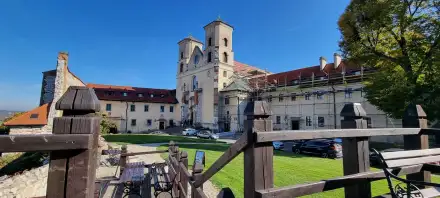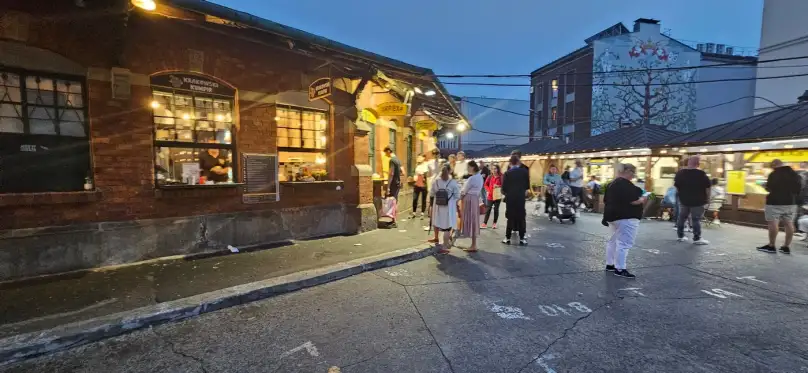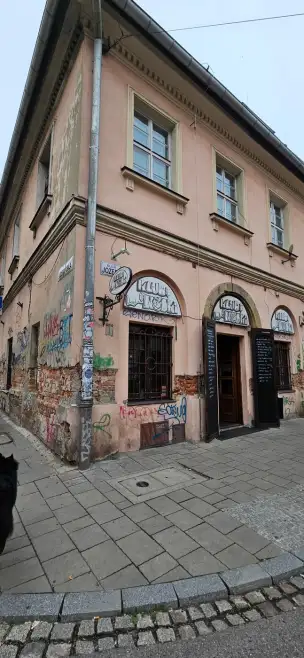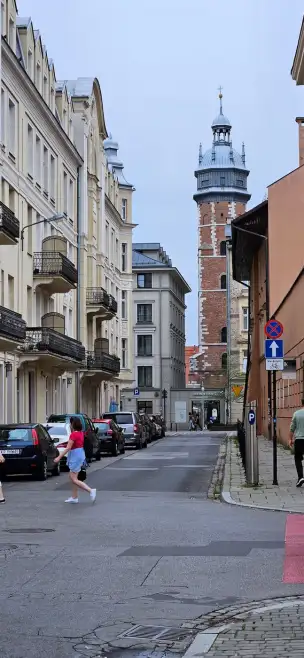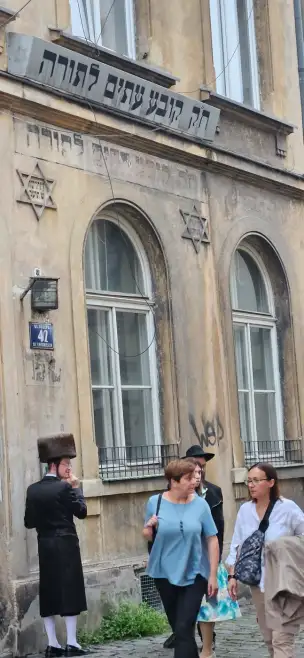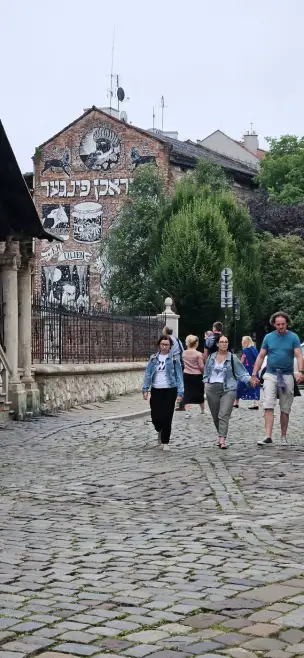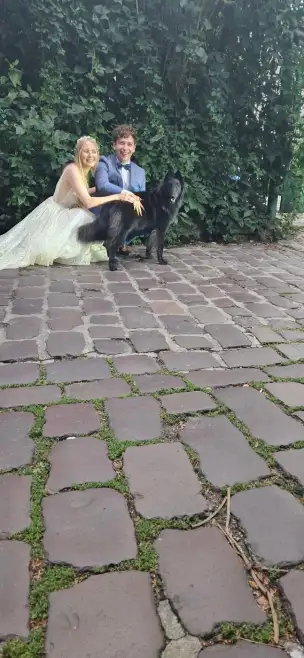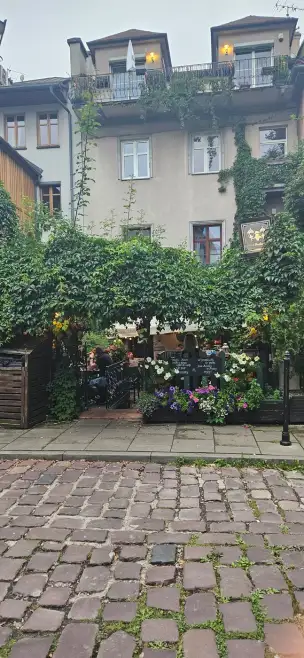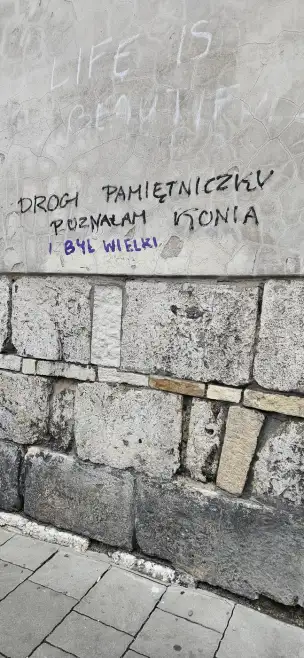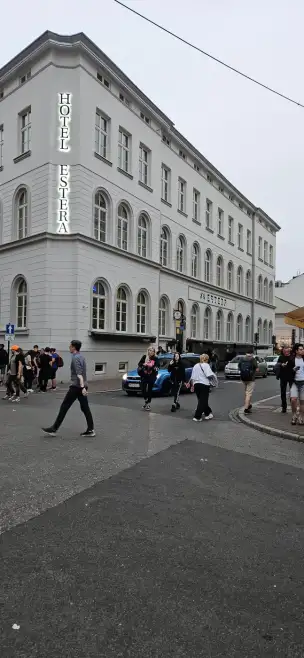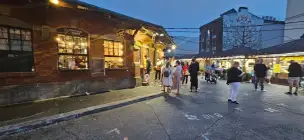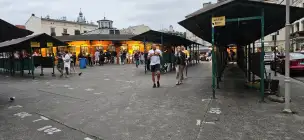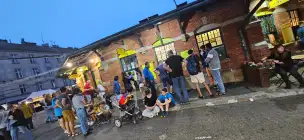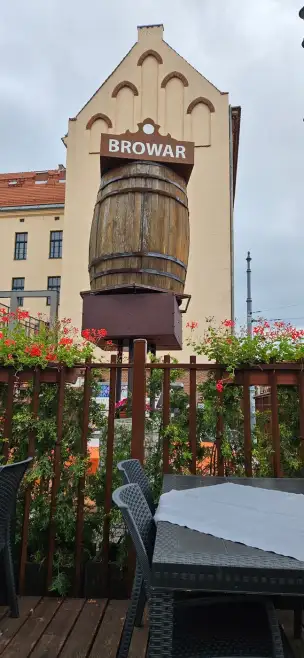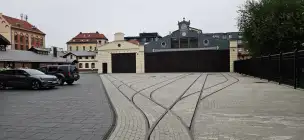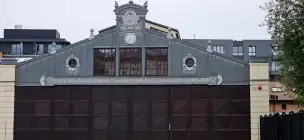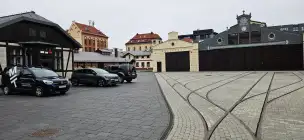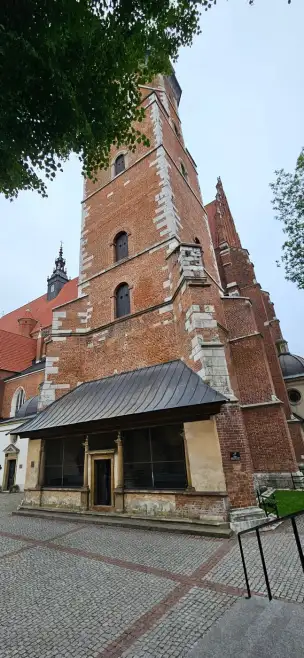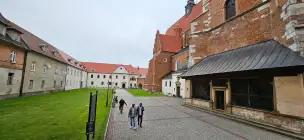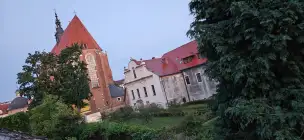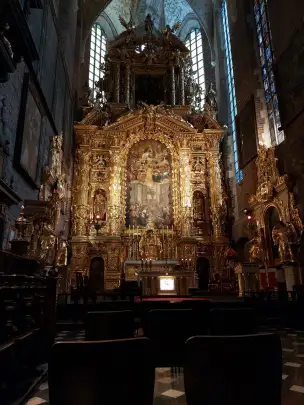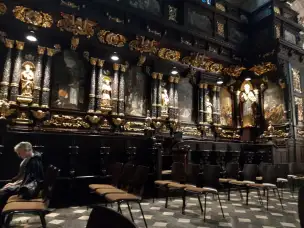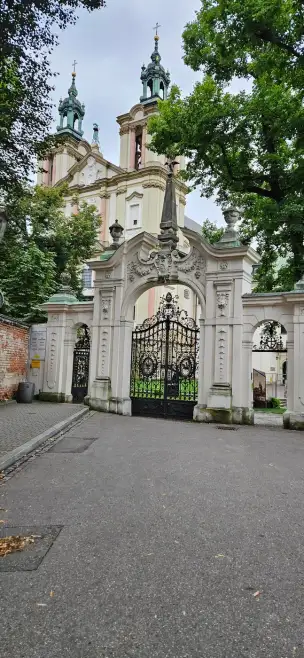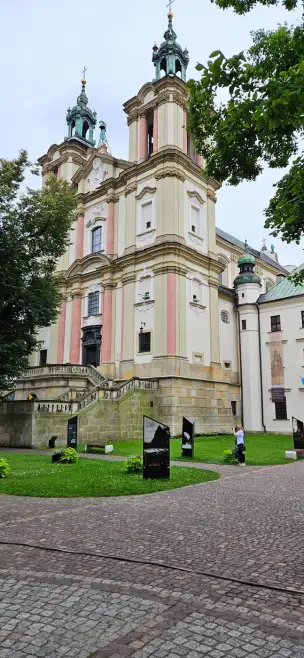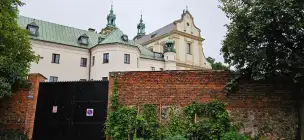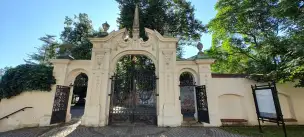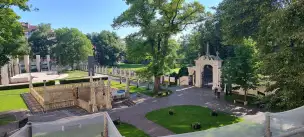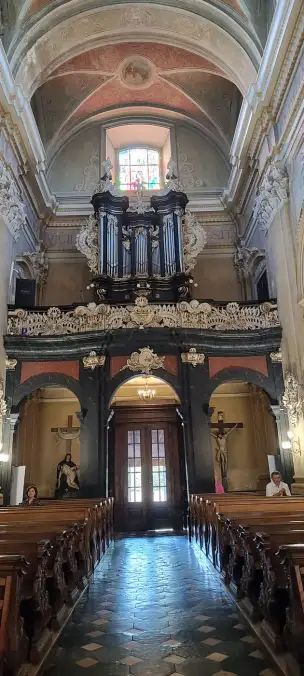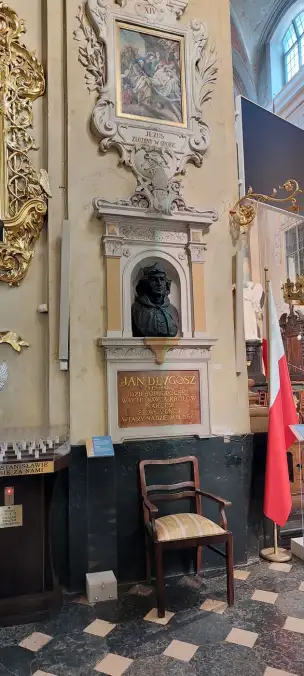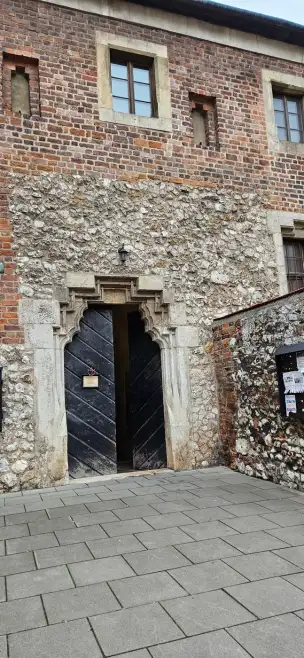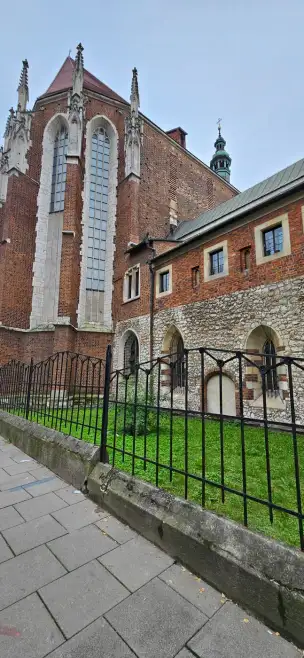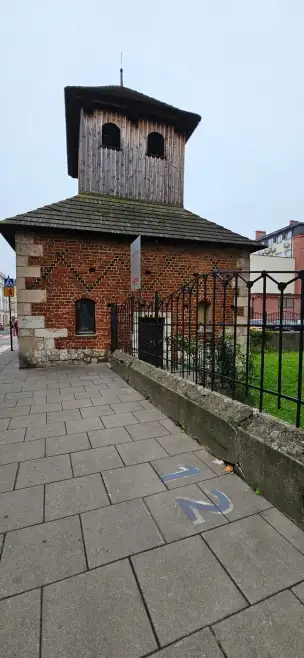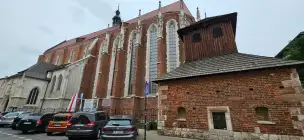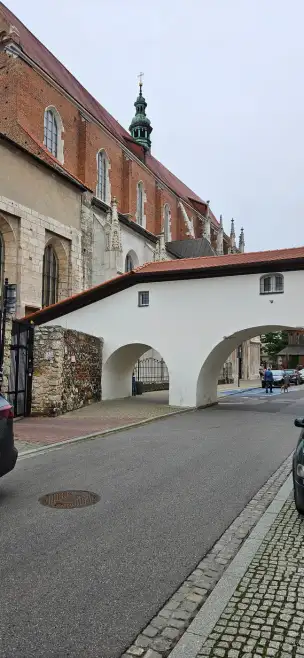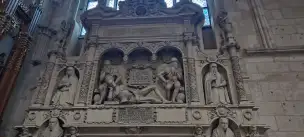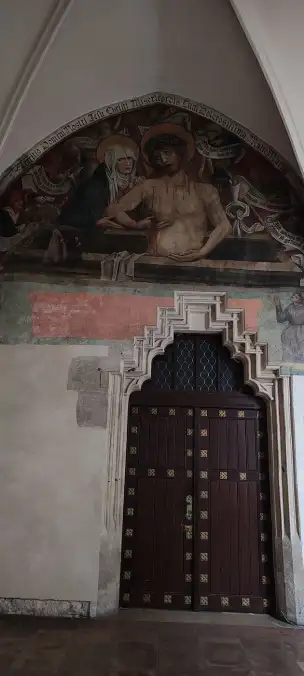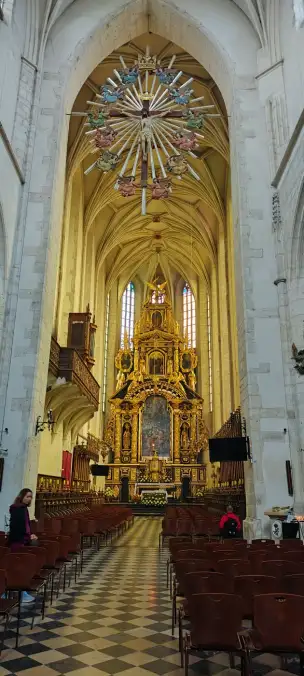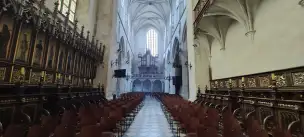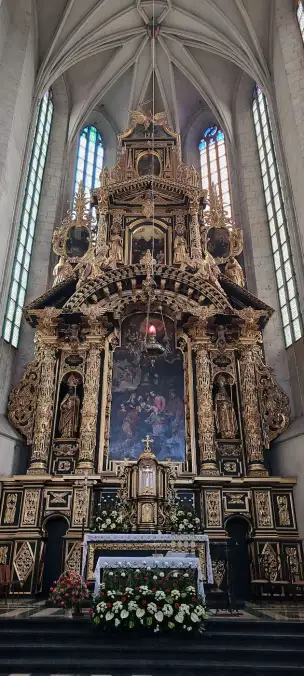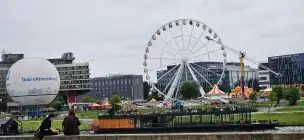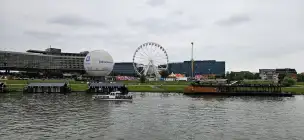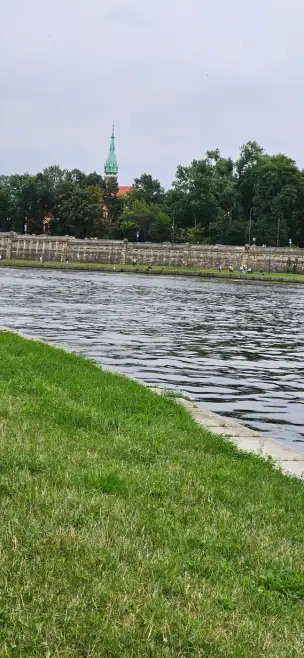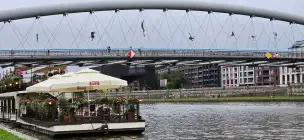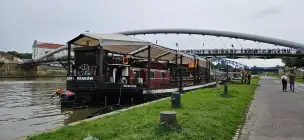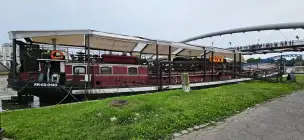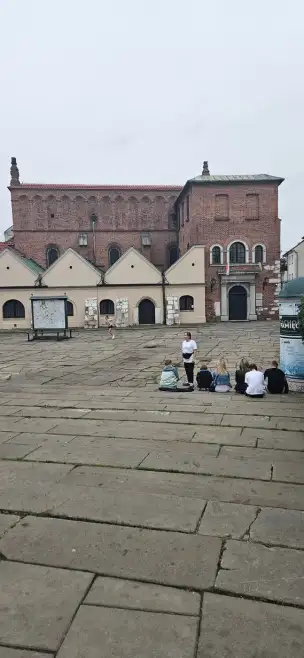Kazimierz, a picturesque district of Kraków, has a rich and diverse history that encompasses not only the Jewish community but also many other cultures and traditions.
My first experience with Kazimierz cannot be called a success. It was back when Gazeta Wyborcza was at its peak, proclaiming that Jewish life was returning to Kazimierz, and optimistic reports appeared on Teleexpress and morning TV shows, featuring enthusiastic, positive eccentrics praising this part of modern Kraków.
So they convinced me. We came to Kazimierz to feel the atmosphere of Oppidum Judeorum, to taste tsimmes, kugel, and gefilte fish — but there was nothing of the sort…
Kazimierz was a district of squats and graffiti-covered ruins. Posters advertising Antifa, Capoeira classes, Yoga, and the opening of the “third mystical eye” hung on lampposts. In restaurants, instead of tsimmes, Indian and vegan cuisine reigned.
With royal Kraków behind us and slums of Calcutta ahead, we gave up and turned back.
More than a dozen years have passed since then, and today Kazimierz, alongside Toruń, is one of the most spectacular examples of commercial triumph — and that’s meant positively.
This former medieval town is now a complete machine catering to tourists interested in partying, and the restaurants no longer limit themselves to dishes approved by the International Society for Krishna Consciousness.
On Szeroka Street, you’ll find several restaurants serving Jewish cuisine, advertised as Polish-Jewish, but not in the sense that they offer dishes typical of Polish Jews — rather, if you don’t want cholent, you’ll get a pork cutlet instead.
Kazimierz is closely linked to the history of the Jewish community in Kraków. It was home to the Jewish quarter, and synagogues such as the Old Synagogue and Remuh Synagogue bear witness to this presence. The annual Jewish Culture Festival offers an opportunity to explore the rich cultural heritage of this community.
However, Kazimierz is not just about Jewish history. The district is also full of religious and secular monuments representing various faiths and architectural styles. Examples include St. Catherine’s Church and the Church of the Body of Christ, which showcase Kraków’s religious diversity.
Kazimierz is a paradise for lovers of diverse cuisine. Restaurants serving both traditional and modern dishes attract food enthusiasts from all over the world.
Regardless of preferences, Kazimierz offers a wide range of accommodation options. Luxury hotels, cozy guesthouses, and apartments allow visitors to choose according to their tastes and budget.
In summary, the Kazimierz district is not only about Jewish heritage but also a mosaic of cultures, religions, and traditions that have coexisted over the centuries. It is a fascinating place that delights with both its history and contemporary spirit.
Kazimierz
Plac Nowy (New Square)
Plac Nowy has a rich history dating back to the Middle Ages. It served as a marketplace and trading hub, as well as an important focal point in the life of Kraków’s Jewish community. During the interwar period and after the war, it remained a significant cultural and commercial center.
Stara Zajezdnia (The Old Depot)
It was originally a tram depot, built between 1913 and 1914. It served as a place where trams operating in Kraków were stored and maintained. Later, in the 1980s, the depot ceased to serve its original function.
The Old Depot in Kazimierz is an important spot on Kraków’s cultural map, combining a rich history with modern artistic and cultural initiatives. It also attracts many art and culture enthusiasts from both Kraków and beyond.
Church of the Body of Christ
The first church on this site was built in the 13th century, while the current Gothic-style church was constructed in the 14th century and has been extensively rebuilt and expanded over the following centuries. It is one of the oldest churches in Kazimierz.
The Church of the Body of Christ in Kazimierz stands out for its Gothic architecture. It features a distinctive façade with many decorations and details, and its interior is richly adorned. Notable highlights include beautiful altars, frescoes, and stained glass windows.
The Basilica of St. Michael the Archangel and St. Stanislaus in Kraków
This church has been granted the title of a minor basilica, an honorary designation given to certain important Catholic churches. It is a place of pilgrimage and prayer for many faithful.
The Basilica of St. Michael houses the relics of St. Stanislaus, one of Poland’s most important saints and the country’s patron. The reliquary containing the saint’s relics is located in the main altar.
This church is also significant in the history of Poland. Important events and ceremonies took place here, including the coronations of Polish monarchs.
Church of St. Catherine of Alexandria of the Augustinian Monastery
The construction of this church was accompanied by numerous structural failures and design changes due to the marshy ground beneath it. For this reason, the church is asymmetrical and somewhat awkward in shape, which makes its form interesting and unusual.
The Augustinian Monastery in Kazimierz was founded in the 15th century by King Casimir Jagiellon. The Church of St. Catherine of Alexandria was part of this monastery and was built in the Gothic style during the 15th century. It is one of the oldest preserved buildings in Kazimierz.
St. Catherine’s Church is an example of Gothic sacred architecture. It features a beautiful façade and an interior decorated with ribbed vaults and other Gothic details.
Inside the church, there are numerous altars and valuable works of sacred art, including paintings and sculptures. Noteworthy are the main altar and the richly decorated side altars.
Kurlandzki Boulevard
Kurlandzki Boulevard runs along the bank of the Vistula River in the Kazimierz district of Kraków. It stretches from the Bernatek Footbridge (Most Kładki Bernatka) in the north to the Dębnicki Bridge (Most Dębnicki) in the south.
The boulevard is named after the Duchy of Courland (now part of Latvia), whose dukes—including Duke Ernst Johann Biron von Curland—owned lands in Kazimierz during the 18th century.
Kurlandzki Boulevard is a popular spot for walks and recreation among Kraków’s residents and tourists alike. With its picturesque views of the Vistula, it’s an ideal place to relax outdoors.
The Old Synagogue in Kazimierz
The Old Synagogue in Kazimierz is a Gothic-Renaissance synagogue built in the second half of the 15th century by Czech Jews who came to Kraków after the Prague pogrom of 1389.
Today, the synagogue houses a branch of the Historical Museum of the City of Kraków.
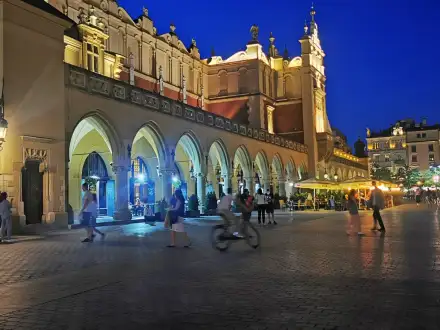
Kraków
The second-largest city in Poland and one of the country’s most important cultural and tourist centers.